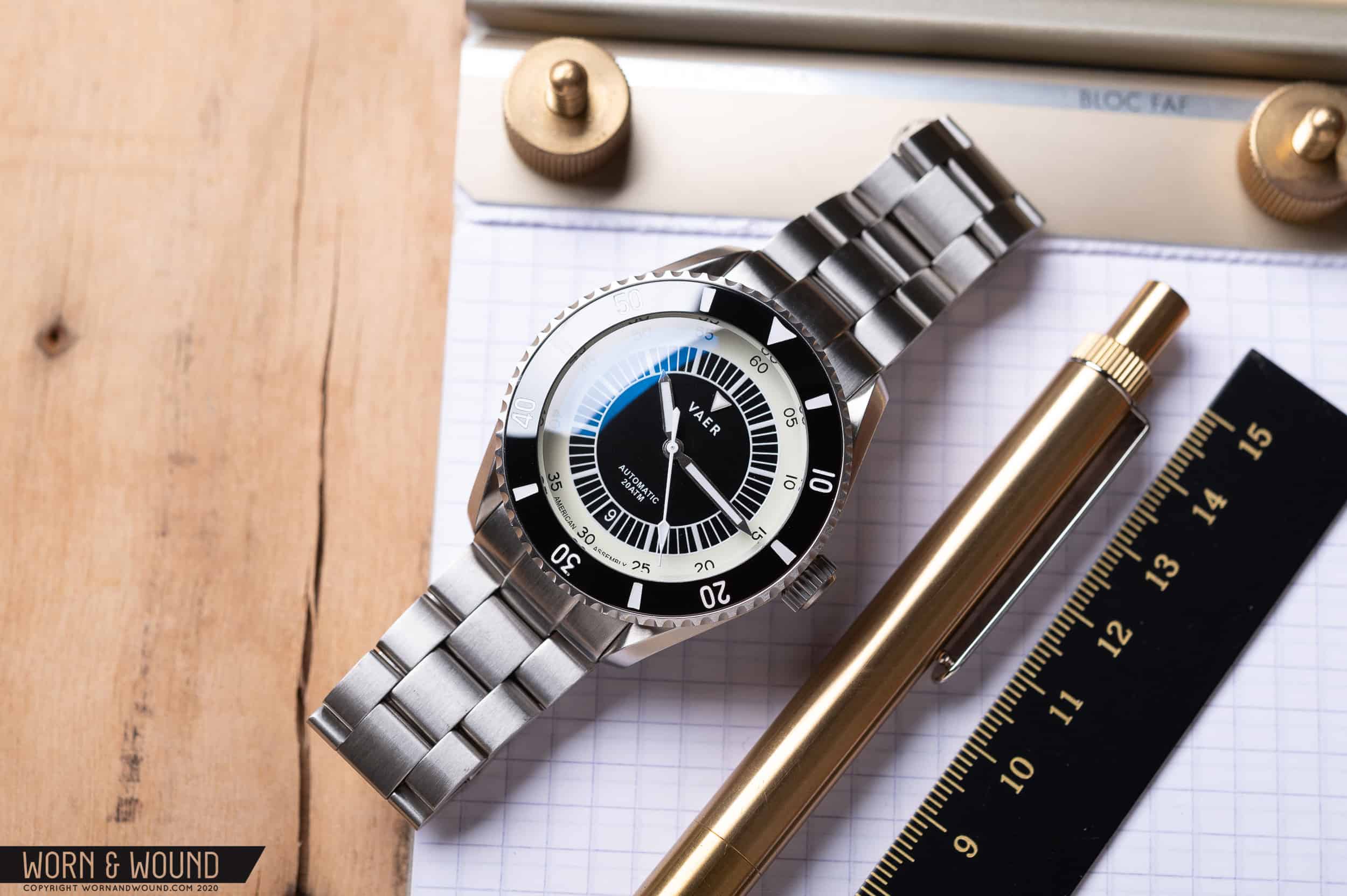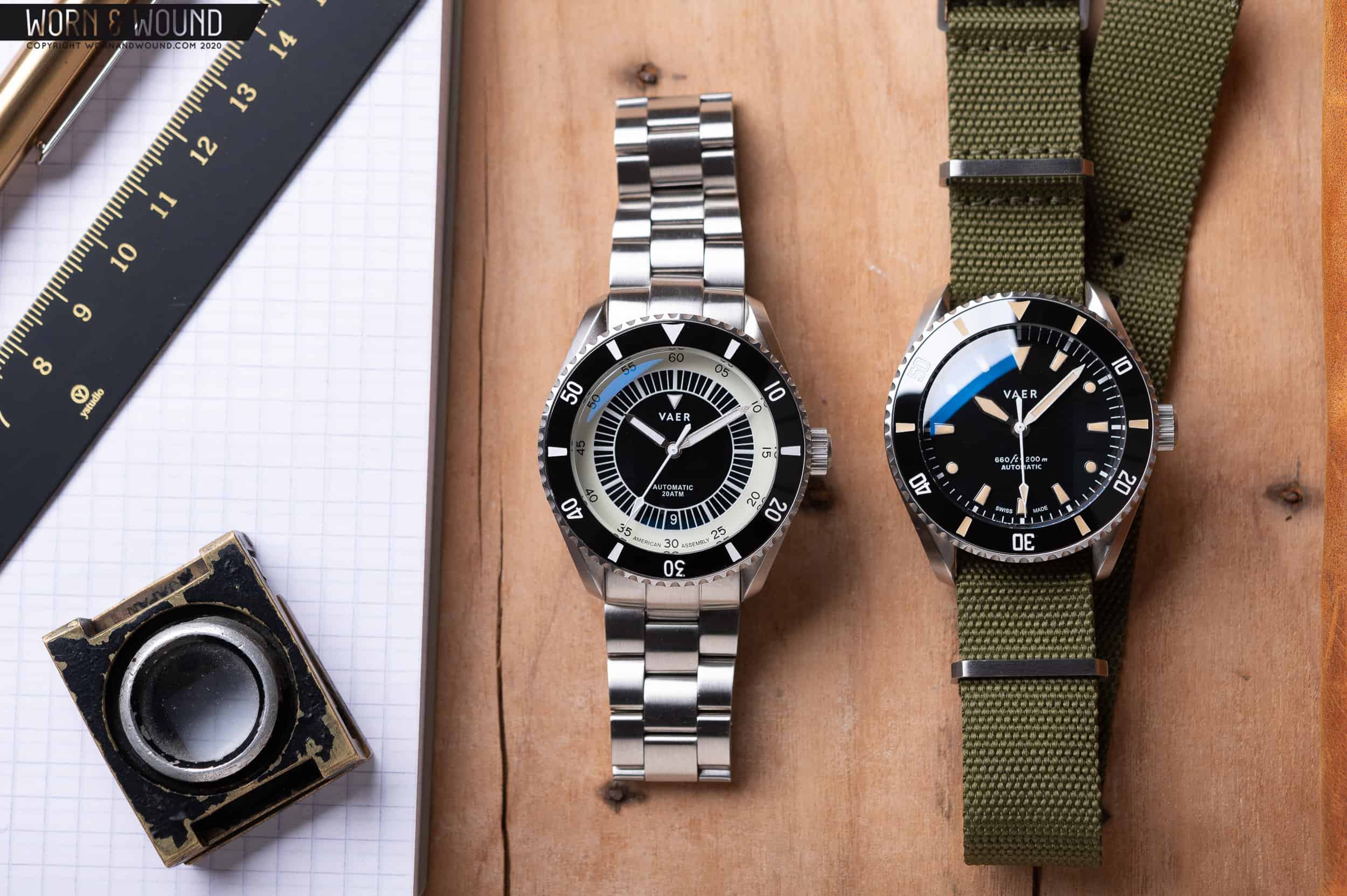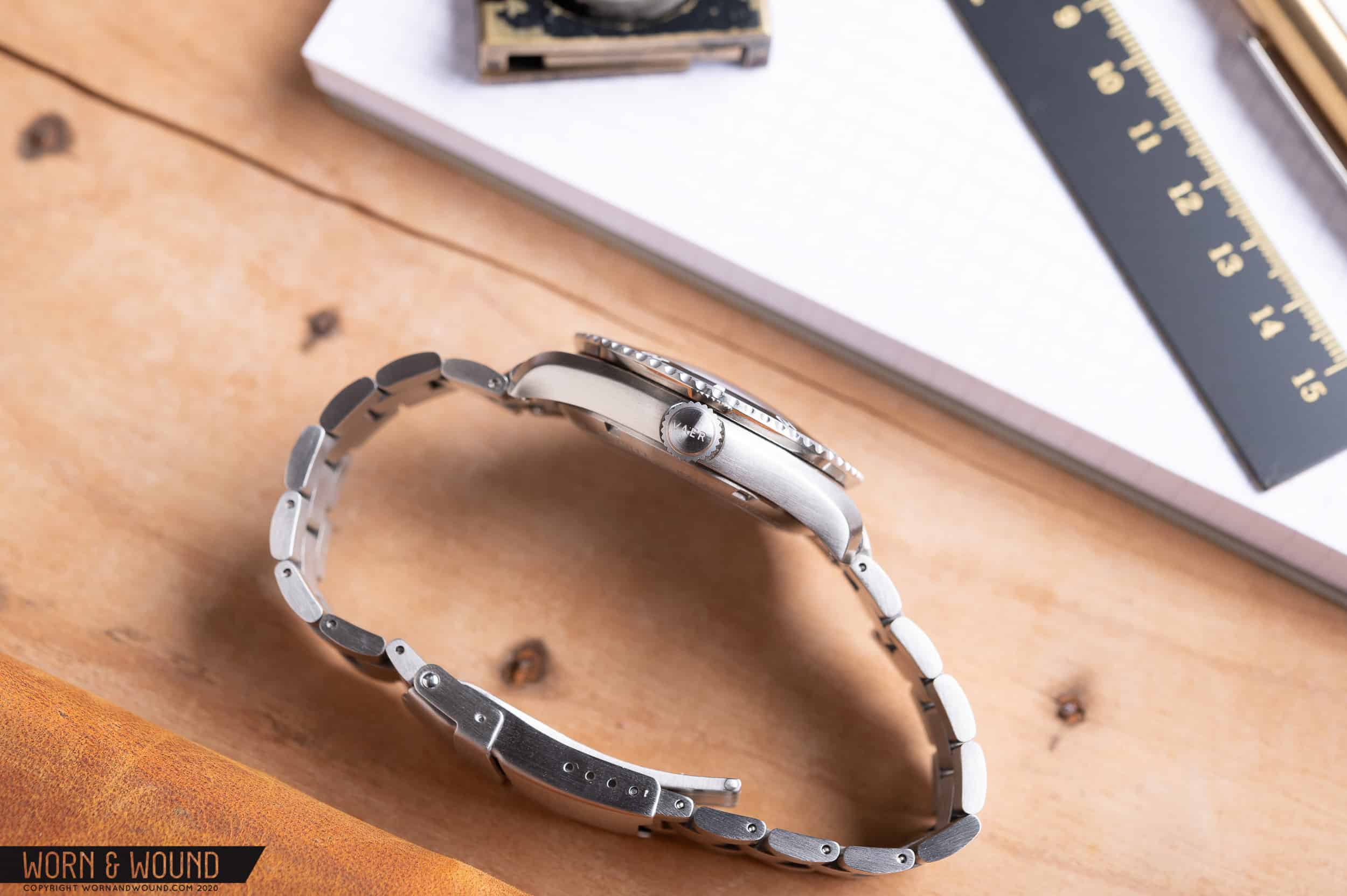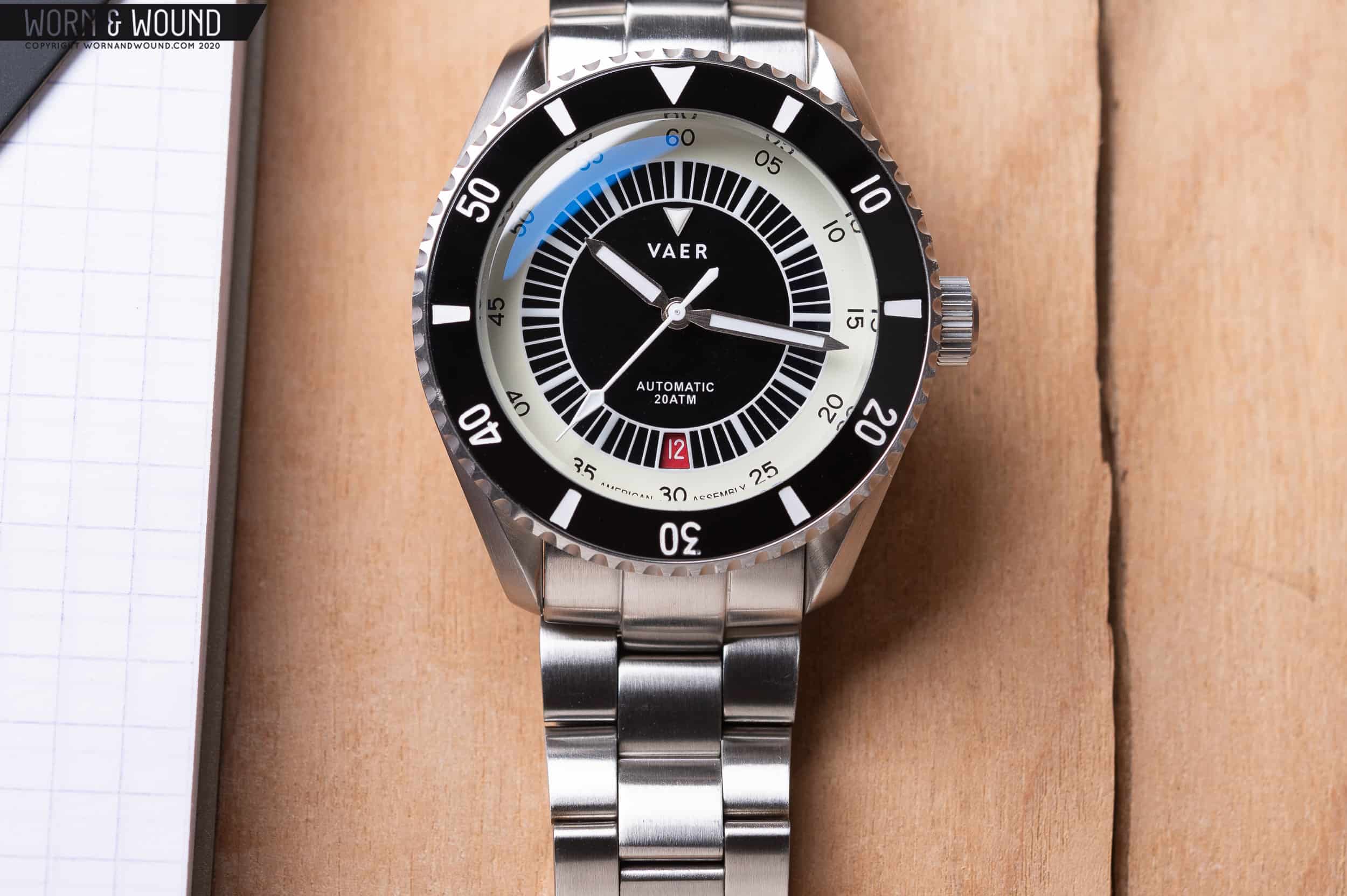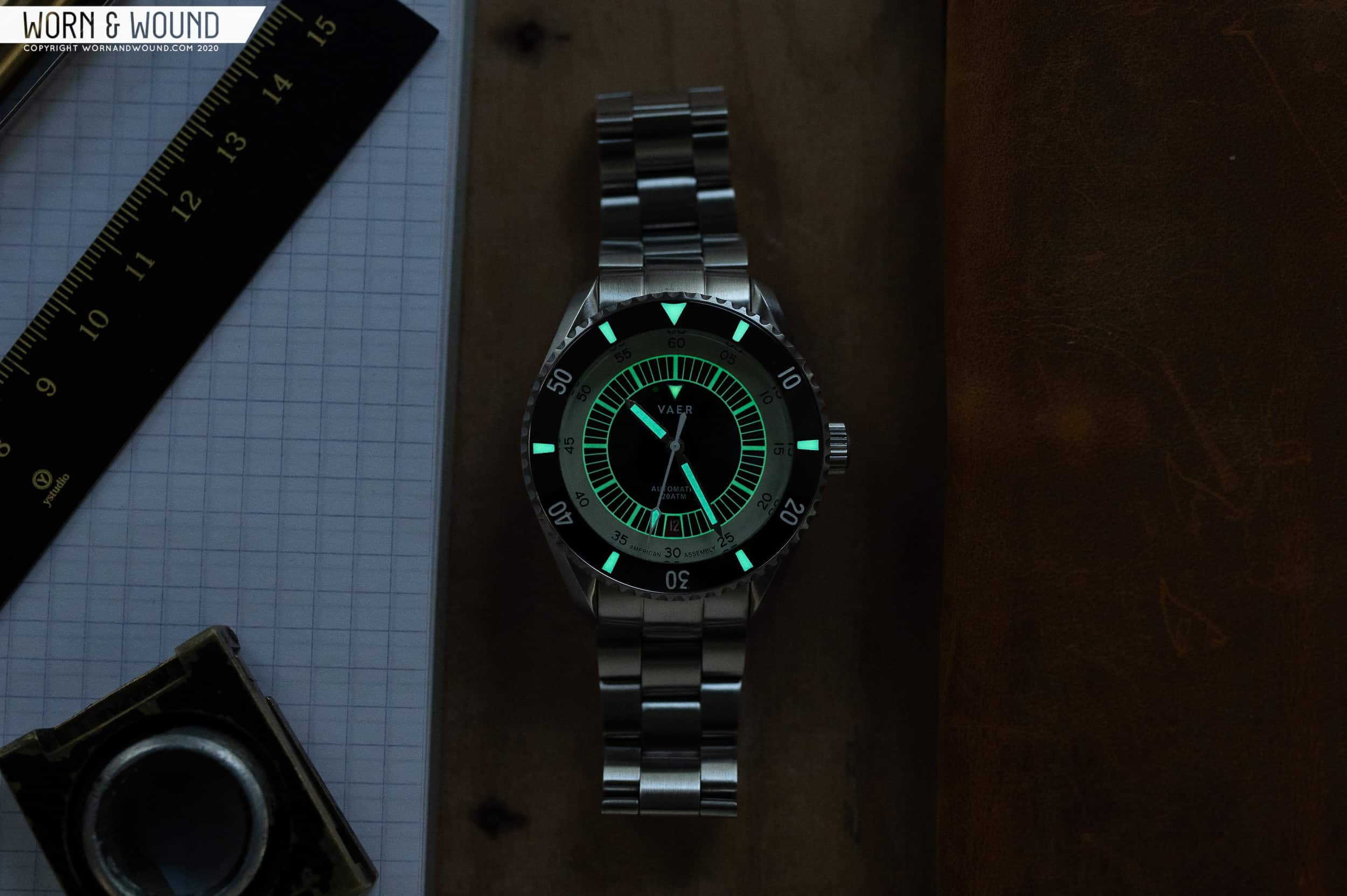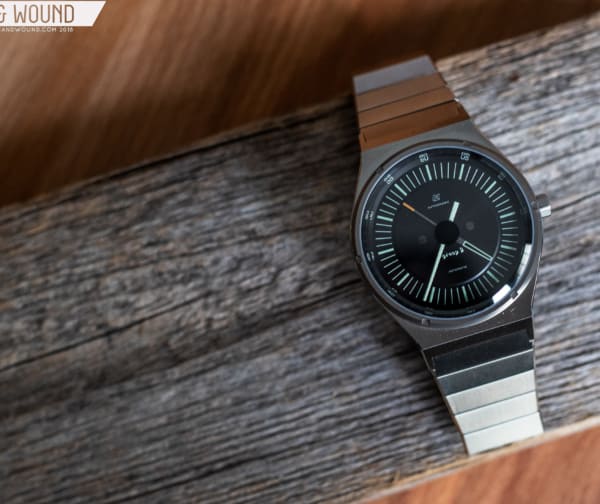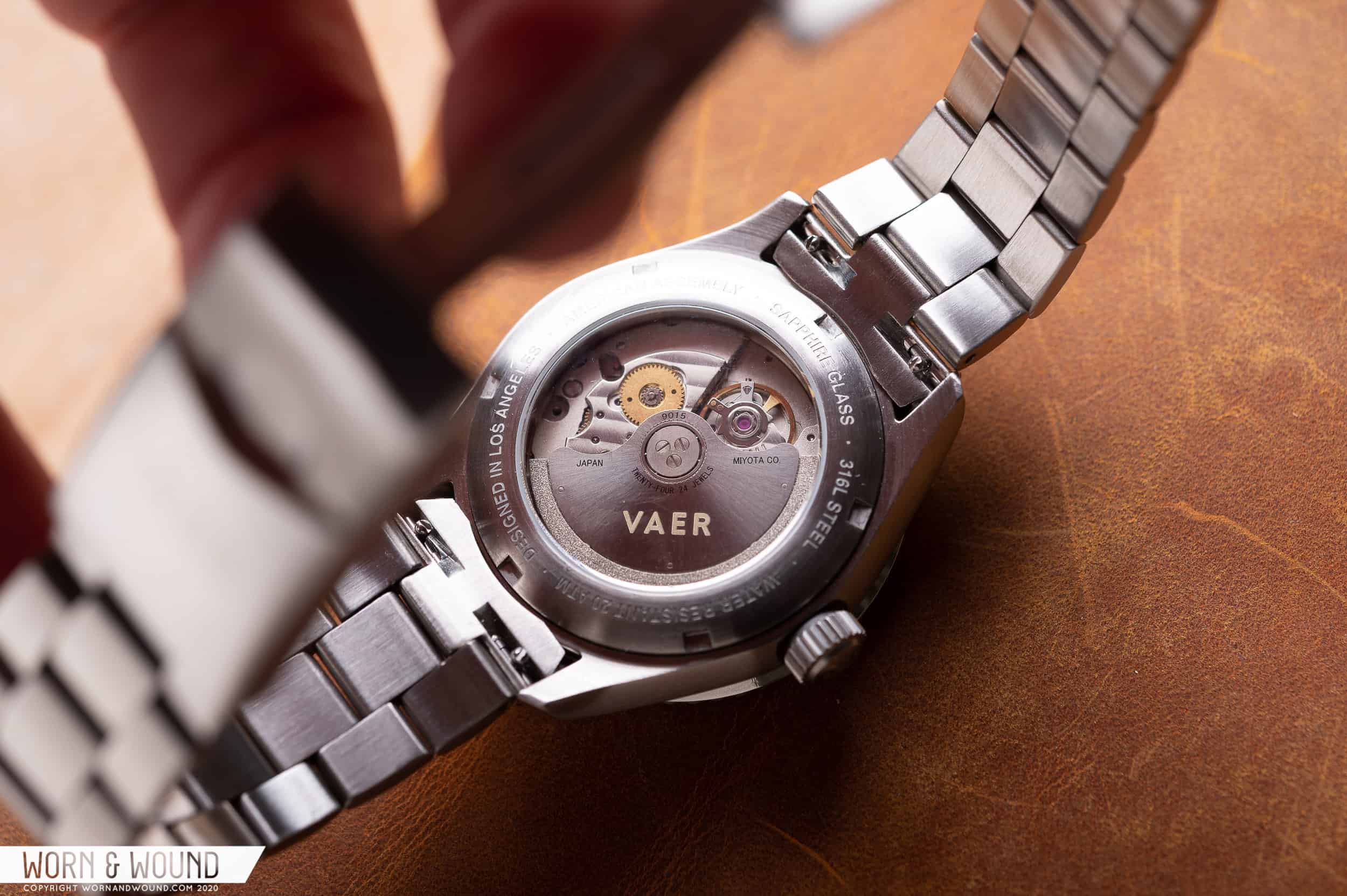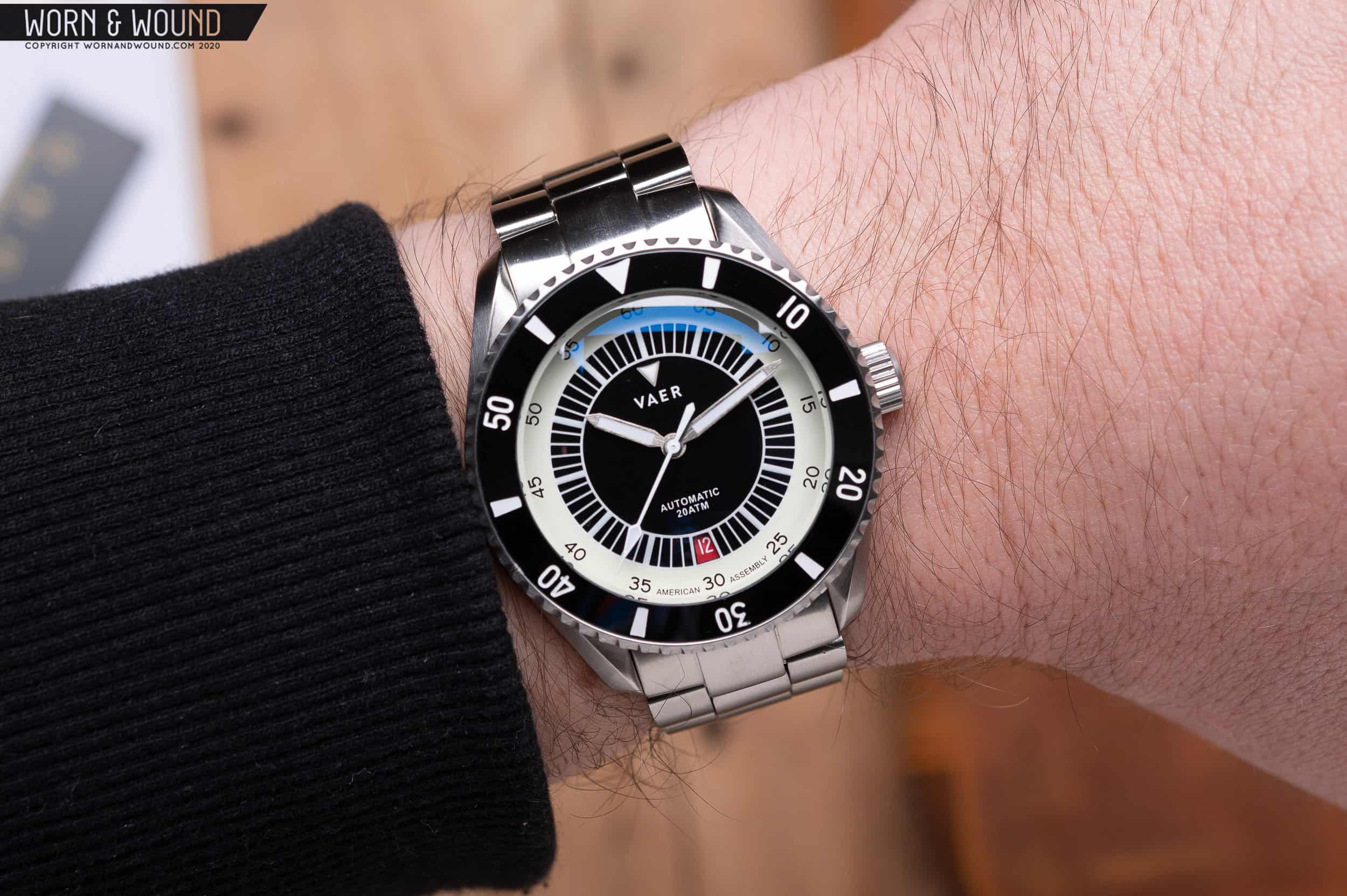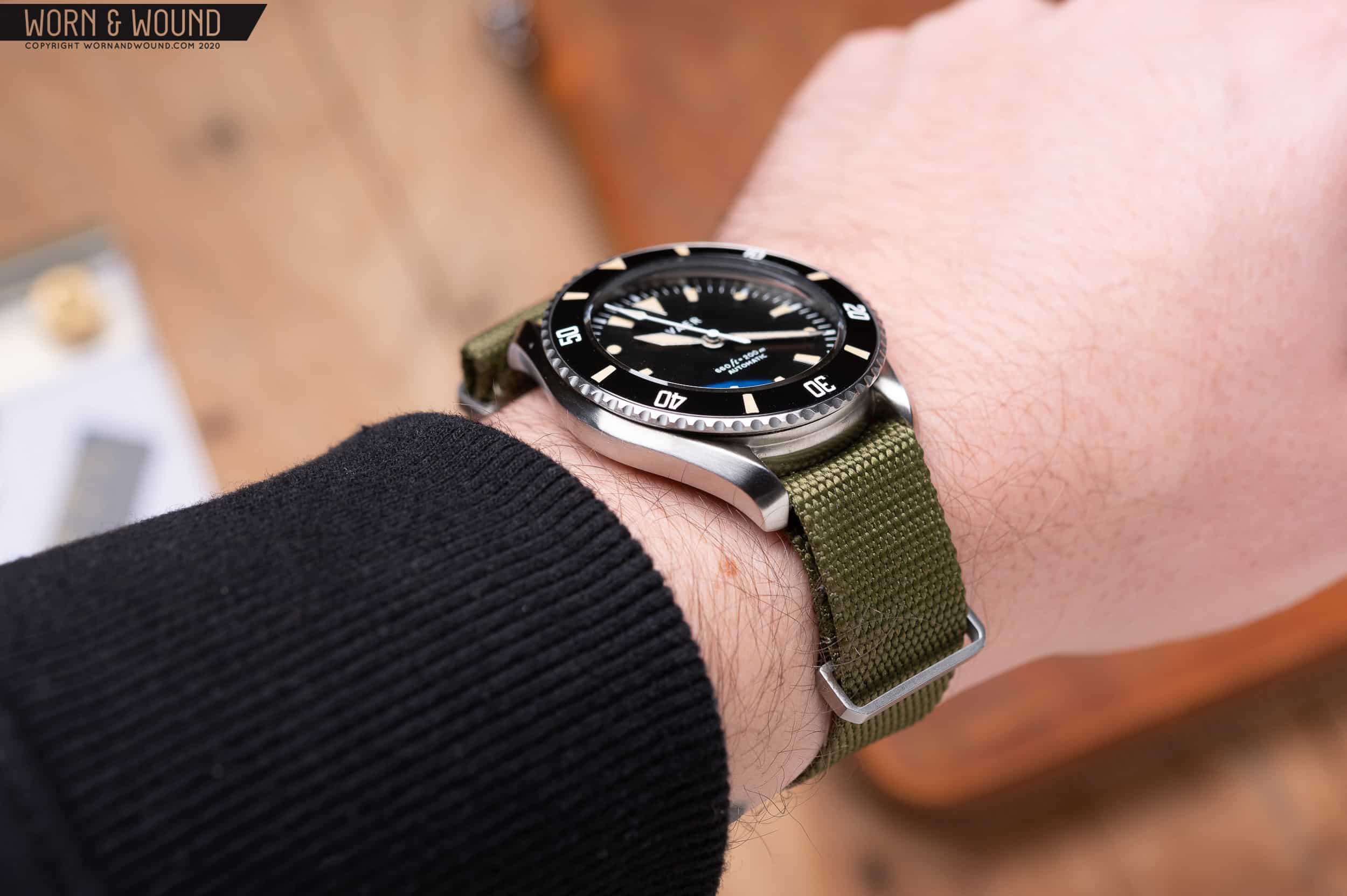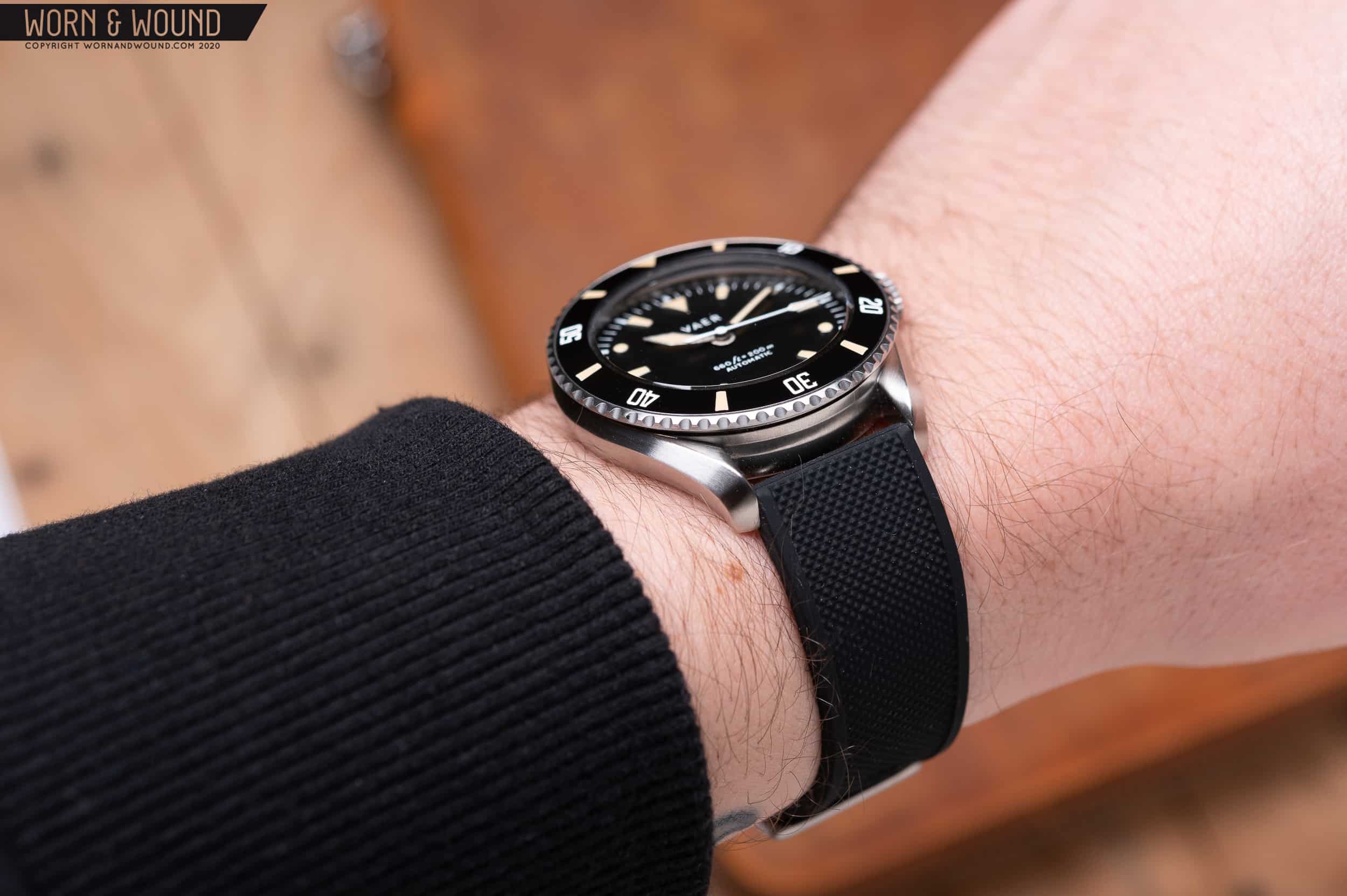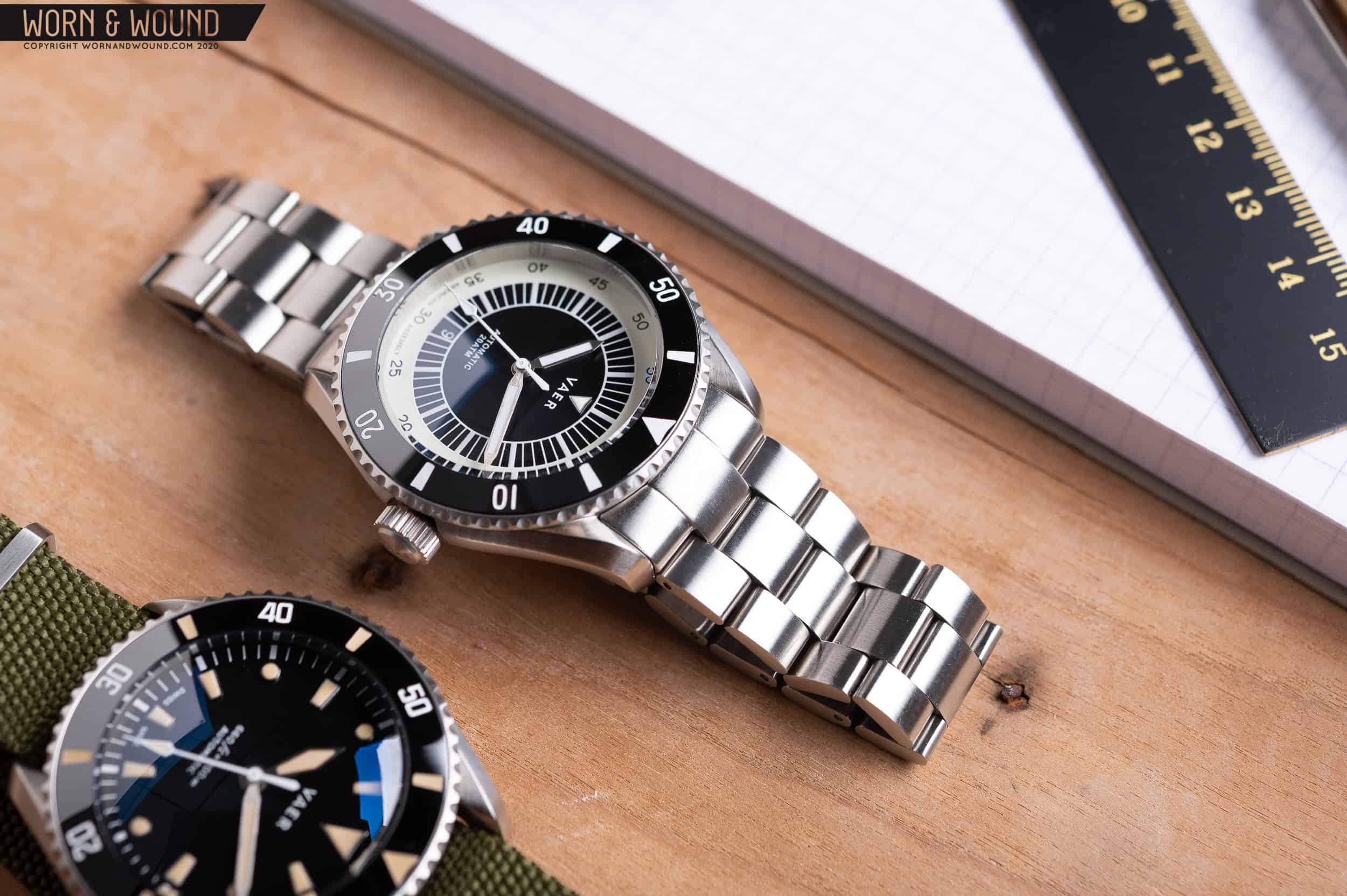Vaer’s lineup of affordable and adventure-ready watches welcomes a new line of vintage-inspired divers. The young brand’s focus is on offering up affordable watches that withstand the rigorous tests that the brand’s founders intended to put the watches through. Surprisingly enough, with one of Vaer’s main focal points being water resistance, they had yet to add a dive watch to their lineup until now. Three years after the brand got their start, we are presented with the D5 Tropic and the D7 Arctic automatic dive watches. The D5 is an American design and assembled watch, while the D7 shares a similar design, yet is assembled in Switzerland with a Swiss ETA movement. Aesthetically, the D5 and D7 draw inspiration from some of the most recognizable dive watches in history. A sort of “greatest hits of vintage dive watches”, if you will. They’re close to homage territory, but the designs don’t focus on any single watch. While the design cues may lean vintage, the construction is thoroughly modern on these 200m-capable dive watches.
We’re going to be looking extra close at the D5 diver in this review. Their approach to different origins of assembly and use of different movements within the same line of watches is an interesting choice. If you’re the type who absolutely needs a Swiss watch, there’s an option for you. If you happen to appreciate a solid workhorse watch with the same design and want to save a few bucks, Vaer’s American assembled watches fit that bill.









 Featured Videos
Featured Videos




